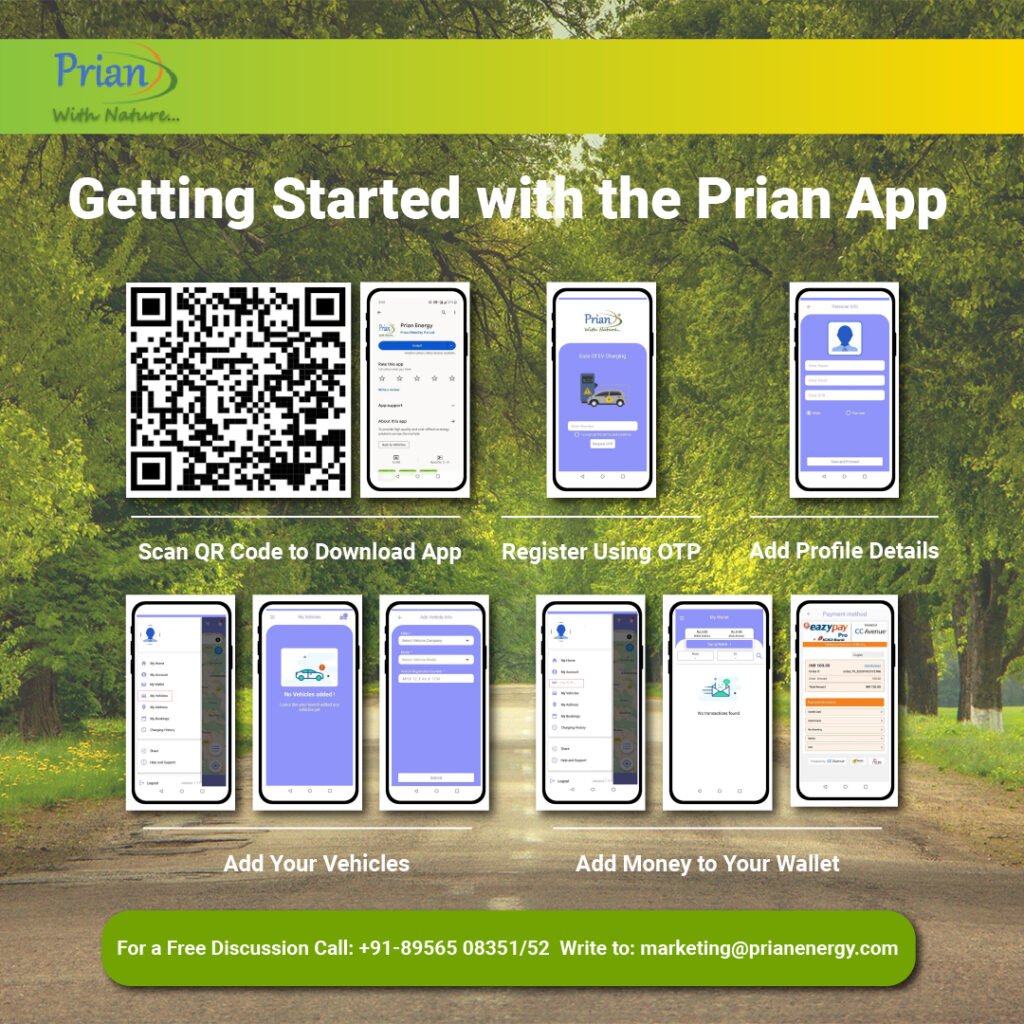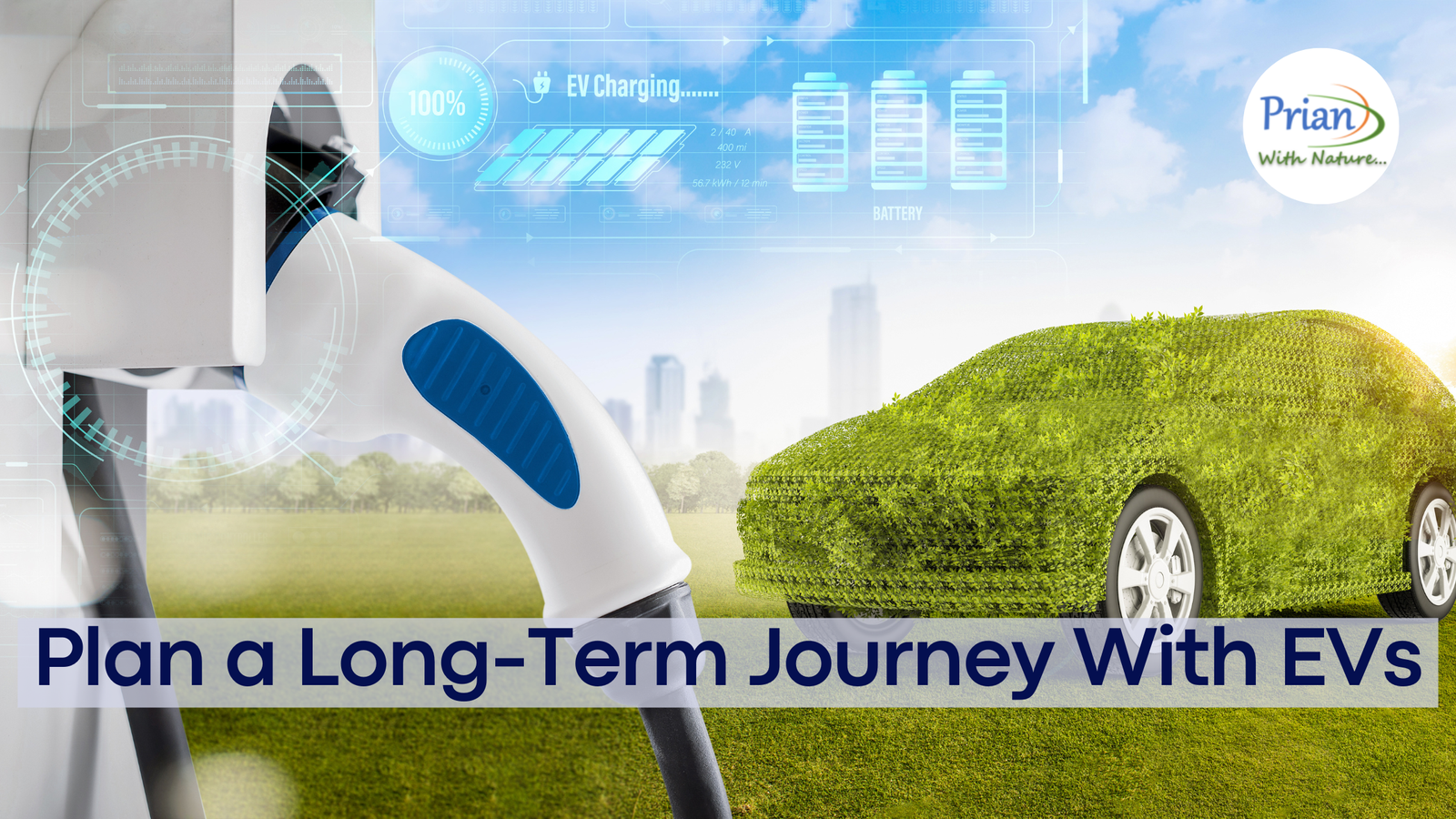Planning a long journey with electric vehicles (EVs) in India might seem a bit challenging, but with some foresight and the right tools, it can be as seamless as traveling in a traditional fuel vehicle.
Related: EV Buying Guide For Indians
This guide will walk you through the key aspects to consider when embarking on a long road trip in your EV.
Know Your EV’s Range
Before heading out, the first step is to understand your vehicle’s driving range on a full charge.
Every EV model offers a different range, depending on the battery size and driving conditions.
Most modern EVs in India, like the Tata Nexon EV or the Citroen ëC3, offer a range of around 250-300 kilometers per full charge. Familiarize yourself with this number, as it forms the backbone of your trip planning.
It’s also essential to use apps that monitor EVs real-time range, especially if you are driving through remote areas where charging stations are sparse.
Plan Charging Stops Ahead
A critical aspect of any EV road trip is planning your charging stops. Unlike fuel stations, EV charging infrastructure, though growing, is still not as widespread in India.
Use apps like Plug share to locate charging stations on your route. This app provides all brands chargers with actual user reviews to locate the right one for you.
When planning, make sure to leave buffer room — try not to deplete your battery below 20%. Aim to plan a charging stop before your EV reaches 20-30% battery life.
For example, if your car has a range of 300 km, try to stop for a charge after every 220-250 km.
Also, find charging points near rest stops, hotels, or restaurants. This way, you can rest or eat while your car charges, reducing the downtime of your journey.
Call Ahead To Hotels & Restaurants
If your trip involves overnight stays or longer breaks, call hotels in advance to confirm if they have EV charging facilities.
Most hotels don’t have fast DC chargers, but many will let you plug into a regular AC socket for a slower charge overnight. Ensure the voltage is compatible with your car’s charging needs.
Also, ensure that you elongate your battery life with AC charging, if available. In our fast vs slow EV charging guide, we’ve mentioned how fast or DC charging can disturb your battery life in the long run.
This step is especially important for trips to remote areas where charging infrastructure is minimal, such as in the mountains or rural regions.
Carry Essential Charging Gear
For peace of mind, pack a portable charger and an earthing kit.
While many EV owners may not be familiar with earthing, it’s an important component in charging safely at places without proper grounding.
An earthing kit, which includes a metal rod and cable, ensures a stable and safe charging setup in rural or unfamiliar environments.
Additionally, always carry an extra charging cable and extension cord.
Sometimes, the charging station’s cord might not be long enough to reach your car, especially if the station is located in a cramped spot.
Utilize Regenerative Braking
Maximizing your EV’s range can be crucial on longer trips. Many electric vehicles feature regenerative braking, which recaptures energy when you slow down or coast, extending your range.
Learn how to use this feature effectively, particularly in downhill areas, where braking can even add charge back to your battery.
Driving consciously, avoiding harsh accelerations, and maintaining a steady speed (ideally around 40-60 km/h) will also help stretch your range.
Monitor Weather & Terrain
Weather and terrain significantly affect an EV’s battery efficiency. Cold weather, for example, can reduce battery life, while warmer conditions are generally better for your EV’s performance.
Also, steep uphill drives drain the battery faster compared to driving on flat terrain or downhill.
If you’re driving in hilly regions, like the route from Delhi to Spiti Valley, plan for frequent charging stops and utilize regenerative braking on the way down to recharge your battery.
Stay Informed with EV Apps
Several EV-specific apps can enhance your road trip experience. In addition to finding charging stations, apps like PlugShare and ChargePoint offer real-time updates on station availability, types of chargers, and expected charging times.
You can also try Prian Energy’s mobile application for the fastest tracking and remote control of your EVs getting charged.

Make sure to familiarize yourself with these apps before your trip and download them onto your phone for quick access.
Prepare For Emergencies
Even the best-laid plans can go awry.
For such situations, be prepared by noting down local workshops and service centers along your route. Make a list of mechanics who specialize in electric vehicles, especially in rural areas where such services might be limited.
Carrying an emergency roadside assistance number is also a good idea, as is knowing whether your EV manufacturer offers any specialized assistance for long trips.
Rely on AC Charging for Long-Term Battery Health
When planning for long-term EV ownership, it’s important to consider the impact of different charging methods on your vehicle’s battery health.
While fast DC charging can quickly top up your battery and minimize downtime during a trip, frequent use of fast chargers can cause the battery to degrade faster over time. This is because fast charging generates more heat, which can stress the battery, particularly if used regularly.
On the other hand, AC charging, although slower, is gentler on the battery. It allows for a steady and consistent flow of power, which promotes better long-term battery longevity.
When planning long journeys, it’s worth scheduling overnight stops at places with AC charging facilities, such as hotels, homes, or restaurants. This way, your EV can charge at a slower, more sustainable rate while you rest.
Related: AC vs DC Charging in Electric Vehicles
For instance, the Delhi-Chandigarh route has ample AC charging options at hotels and rest stops.
Though it takes longer, the benefit of preserving your battery health outweighs the time saved with fast charging. As a long-term EV owner, prioritizing AC charging will help maintain your car’s performance and range over the years.
Pack Light With EVs
While it may seem insignificant, the more weight your EVs carry, the more energy it consumes.
So, for a longer trip, pack light and avoid unnecessary items. Keeping your EV’s load to a minimum will help maximize your driving range.
Final Thoughts
Embarking on a long journey with EVs might require a little more preparation compared to a traditional fuel vehicle, but the benefits far outweigh the extra effort.
With lower running costs, eco-friendly credentials, and a more comfortable driving experience, EVs are perfect for long road trips — especially if you plan well in advance. Use the right tools, monitor your charging stops, and enjoy the drive!
With the growing charging infrastructure and increasing availability of fast chargers in India, EV road trips are becoming easier and more accessible. Just remember the golden rule: Plan, Prepare, and then Progress.
By following these tips, your next EV road trip in India can be a smooth and enjoyable experience.


Leave a Reply